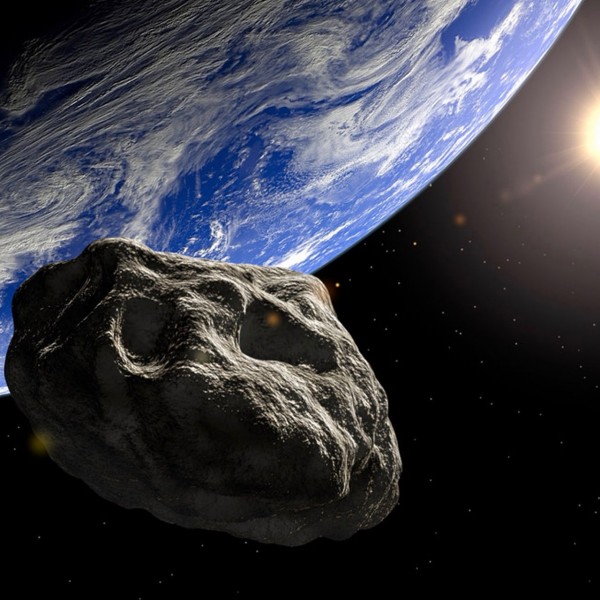
Large asteroid 7335
A large asteroid will safely pass by our planet on May 27, 2022. Although it won’t be visible to the eye, both professional and amateur astronomers will be looking at the huge space rock as it sweeps past. Asteroid 7335 (1989 JA) is a stony Apollo-type asteroid (just like the Chelyabinsk asteroid that entered Earth’s atmosphere in 2013, breaking windows over six Russian cities). Asteroid 7335 (1989 JA) won’t get that close. But the May 27 approach is the closest calculated pass of this particular space rock to date, and for the next 200 years.
Asteroid 7335 (1989 JA) orbits the sun every 2.35 years. It has an estimated diameter of 3,609 feet (1,100 meters, or about 10 American football fields laid end to end). Closest approach to Earth happens at 14:26 UTC (10:26 ET) on May 27. But the best opportunity to get a glimpse through backyard telescopes comes two nights before its closest flyby, when the space rock will be reflecting sunlight more efficiently.
Because of its size – and because it sometimes comes close – 7335 (1989 JA) is classified as a Potentially Hazardous Asteroid. But there is absolutely no danger during the 2022 flyby. The space rock will be as far as 10.5 times the Earth-moon distance, at 2.5 million miles (2,492,594 miles or 4,011,441 km) from the Earth’s surface.
That’s still close enough to locate in amateur telescopes. Look below for charts, showing you where to point your telescope and try it.
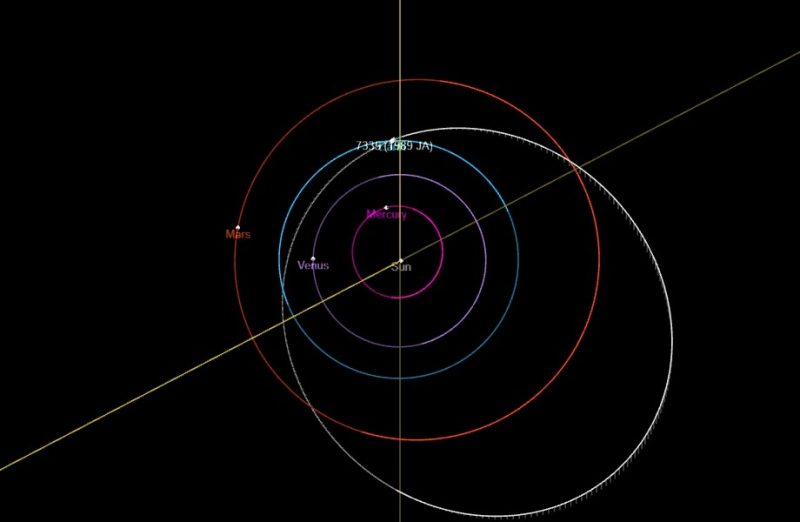
If you have a backyard telescope
The asteroid – which many are calling simply “7335” – might reach a brightness or magnitude of 11.7. That is bright enough to be seen in a 6- to 8-inch diameter (15 to 20 cm) backyard telescope (or larger telescopes).
In a telescope, asteroid 7335 will appear as a slow-moving “star” in front of the fixed background stars. The distance will cause it to appear slow, although in fact this asteroid is traveling at a speed of 29,349 miles per hour (47,232 km/h or 13.12 km/s), relative to Earth.
For observers using telescopes in North America, the best opportunity to get a glimpse of the large space rock comes on the night of May 25, 2022. On that date, asteroid 7335 should appear slightly brighter and still at an observable elevation above the southern horizon.
After May 26, asteroid 7335 gets too close to the horizon for Northern Hemisphere viewing, but observers in Earth’s Southern Hemisphere can still see it.
Charts for asteroid 7335 (1989 JA)
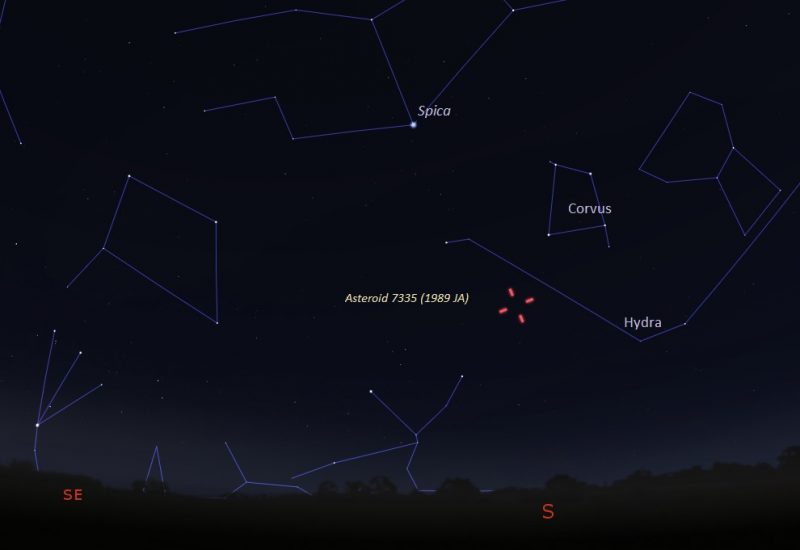
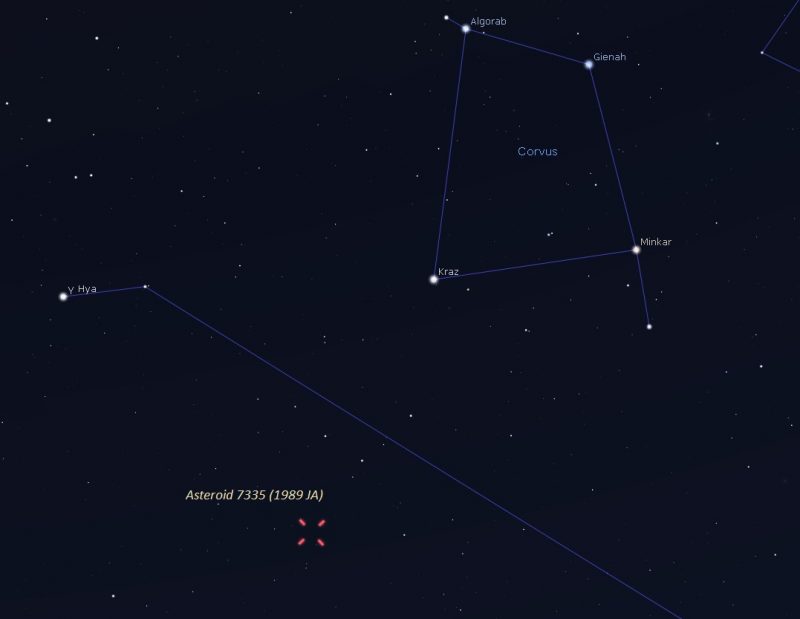
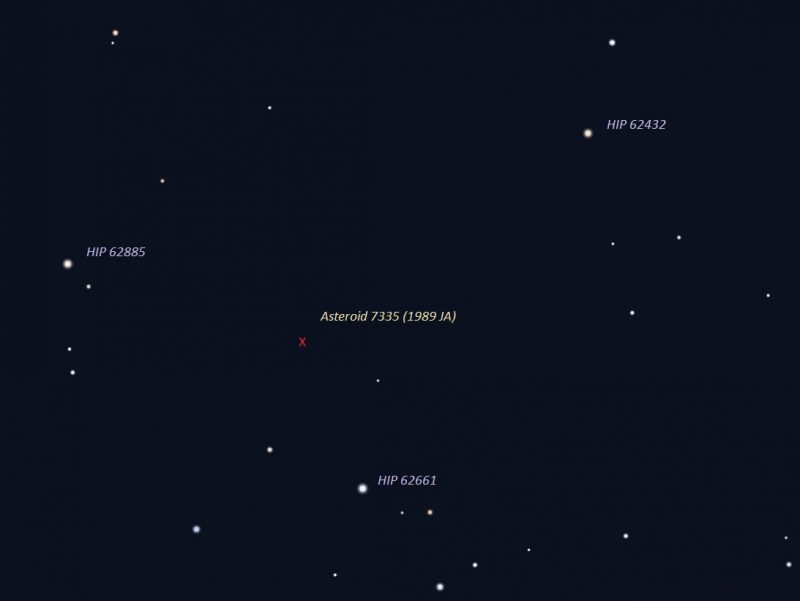
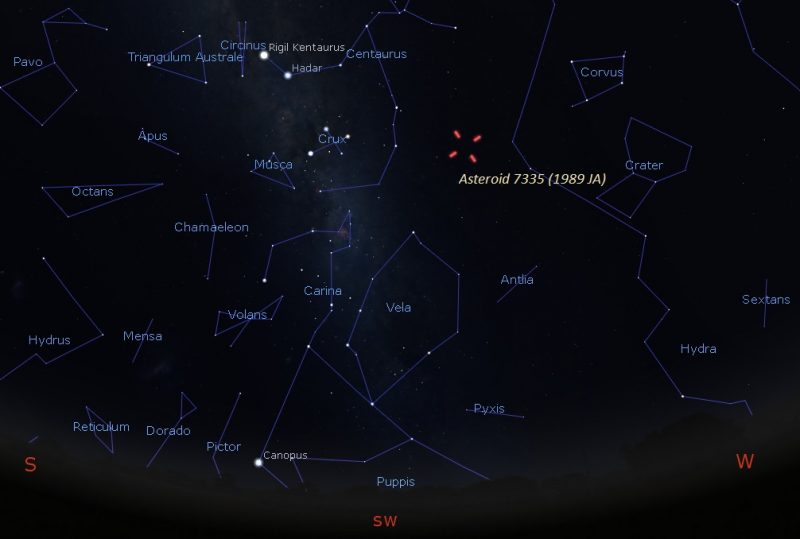
Professional astronomers interested, too
Between May 16 and 26, 2022, professional astronomers will study the space rock using the 230-foot (70-meter) DSS-14 Goldstone Radar Antenna in California. Previous observations from Arecibo suggest that asteroid 7335 completes a rotation every 12 hours, and has a fairly smooth surface.
American astronomers Eleanor Helin (1932-2009) discovered asteroid 7335 (1989 JA) on May 1, 1989, at the Palomar Observatory in California.
Bottom line: Large asteroid 7335 (1989 JA) will safely pass our planet on May 27, 2022, coming closer than it will again for the next 200 years.
The post Large asteroid 7335 to pass safely May 27 first appeared on EarthSky.
0 Commentaires